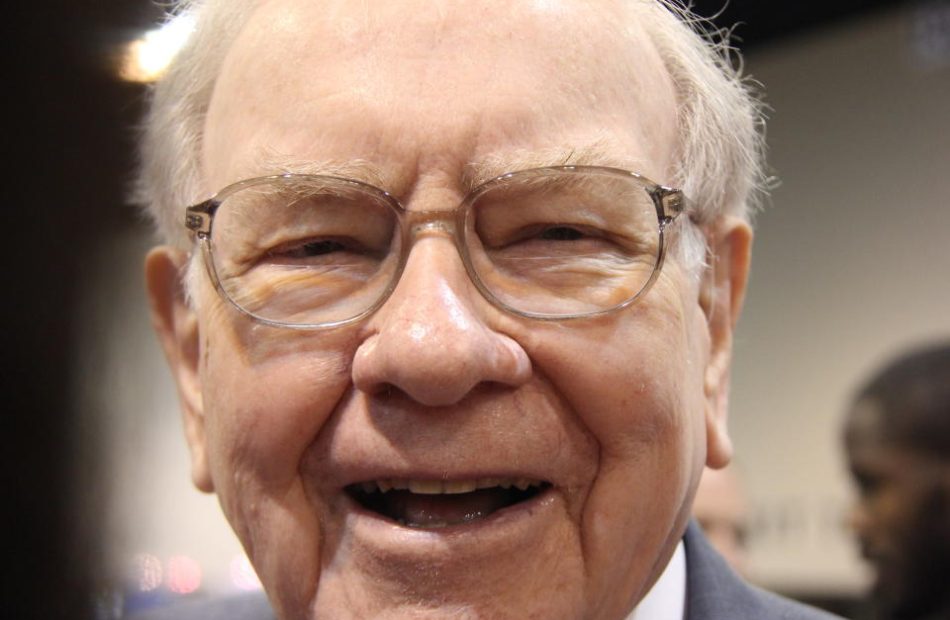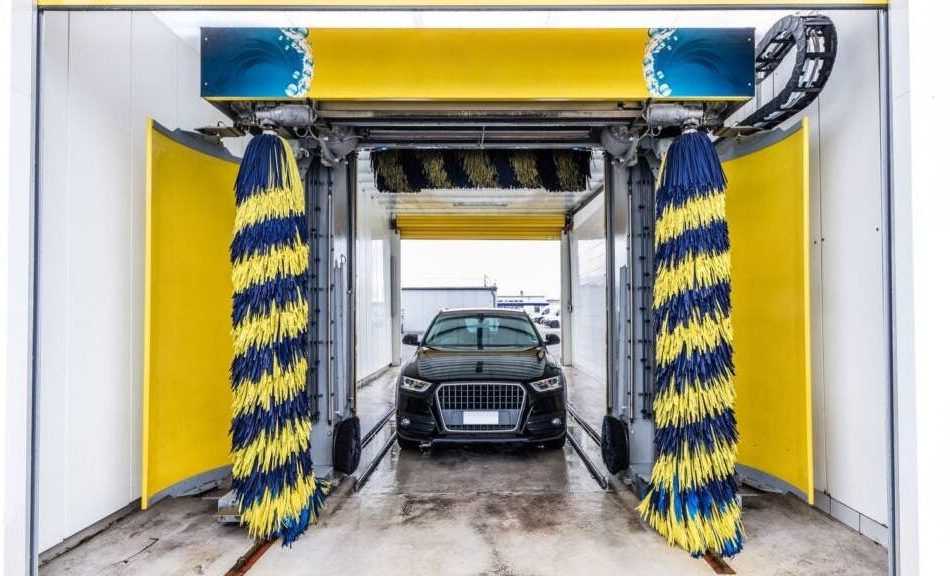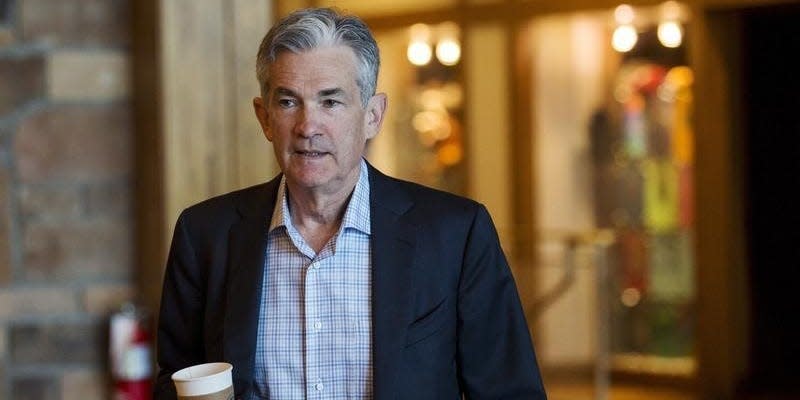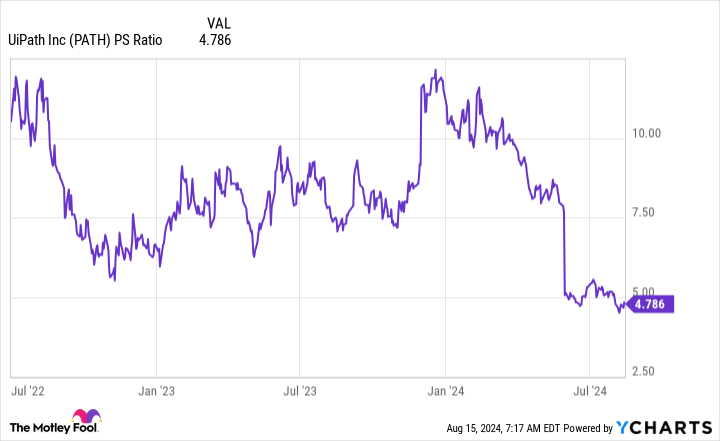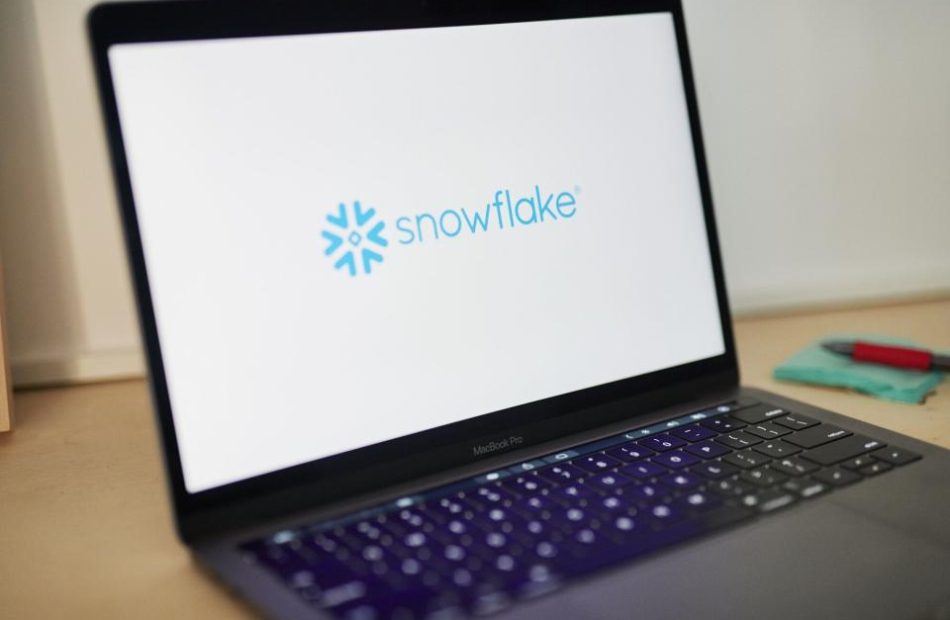This Company Just Became Warren Buffett's Second-Biggest Stock Holding. Is It a Buy Today?
Warren Buffett was making headlines for some of his recent trades even before his 13F filing last week, which detailed all of Berkshire Hathaway‘s trades in the second quarter. But that latest Securities and Exchange Commission filing brought even more news, and not just about stocks he bought and sold. One of his best-loved stocks has climbed into the No. 2 spot in the Berkshire Hathaway portfolio, and it’s a name Buffett-watchers know well.
What happened in the second quarter
Even before the 13F was released, investors already knew that Buffett had sold a chunk of Berkshire’s top holding, Apple. Apple remains the largest position in the portfolio, but instead of accounting for almost half of its value, the tech giant now makes up just under 29%. That’s still an outsized percentage, and no one should think that Buffett has lost faith in Apple, which he recently added to the list of stocks he would never completely sell.
The other stock sale investors already knew about was Bank of America, which is Buffett’s favorite bank stock. Previously, it had been the portfolio’s second-largest position, but he reduced the size of that stake in Q2. He also opened new positions in Heico and Ulta Beauty, and bought and sold smaller amounts of stock from several of his existing positions.
However, after that sale of Bank of America shares, American Express (NYSE: AXP) — a position that Buffett hasn’t touched in about 30 years — is now his second-largest holding.
Why Buffett loves it
American Express is a classic Buffett stock, and he often sings its praises. He has long said that he would never sell American Express or his other favorite, Coca-Cola.
Buffett freely shares his investing wisdom and often talks about what he looks for in a stock. The first part of his formula is that he doesn’t look for great stocks — he looks for great businesses. According to his paradigm, a great company’s stock is likely to appreciate over time while the business grows steadily and profitably.
The next thing he looks for are businesses with durable, long-term competitive advantages. American Express is an established company with a niche target market, rigorous credit management, and a top rewards program.
It has always targeted an upscale, resilient consumer demographic, and in recent years, it has successfully pivoted to focus on a younger cohort, which is driving new membership and should be a reliable growth driver for decades. Management anticipates revenue growth of about 10% this year with a strong increase in earnings per share, and it is targeting similar results for the long term.
Buffett mentioned American Express’ “worldwide” brand as its moat. He often talks about businesses that participate in the American story, and American Express plays an important role in the U.S. economy.
Buffett also loves bank stocks. American Express isn’t a classic bank stock, but it does operate using a closed-loop model, which means it underwrites its own loans, unlike rival credit card networks Visa and Mastercard. These are also Buffett stocks, for similar reasons, but he doesn’t talk about them the same way he does about American Express. Banks have lots of cash, which gives them flexibility and opportunities, and they drive spending and the economy.
He has long said that he, along with Charlie Munger, who passed away last year, look for four things in an investment: A business that is understandable, has favorable long-term economics, able and trustworthy management, and a sensible price tag.
American Express has the kind of business Buffett understands, and its model leads to favorable long-term economics, which it has demonstrated over the decades that Berkshire Hathaway has owned its shares. Able and trustworthy management is how the company has been able to refresh itself to appeal to a new and different cadre of customers, and to grow revenues and increase profits despite periods of inflation and economic volatility.
It has also shown its commitment to creating shareholder value through dividend hikes and share buybacks — common behaviors for companies Buffett invests in.
Finally, American Express usually trades at a discount to the S&P 500 average. Today, it trades at a price-to-earnings ratio of 19, while the S&P 500 average is 27.
Is American Express a good stock pick for you?
Buffett rarely ventures past value stocks, and American Express is very much a value stock. So if you’re looking to add a high-growth stock to your portfolio now, the financial giant might not fit the bill. However, it does have a reliable record of growing sales and profits at a steady pace, and it has plenty of growth drivers to keep its business running smoothly.
As such, it’s a great pick for value investors or any investor looking for an anchor stock to add to a diversified portfolio. You can expect more growth from American Express for the foreseeable future, as well as an increasing dividend.
Should you invest $1,000 in American Express right now?
Before you buy stock in American Express, consider this:
The Motley Fool Stock Advisor analyst team just identified what they believe are the 10 best stocks for investors to buy now… and American Express wasn’t one of them. The 10 stocks that made the cut could produce monster returns in the coming years.
Consider when Nvidia made this list on April 15, 2005… if you invested $1,000 at the time of our recommendation, you’d have $787,394!*
Stock Advisor provides investors with an easy-to-follow blueprint for success, including guidance on building a portfolio, regular updates from analysts, and two new stock picks each month. The Stock Advisor service has more than quadrupled the return of S&P 500 since 2002*.
*Stock Advisor returns as of August 12, 2024
Bank of America is an advertising partner of The Ascent, a Motley Fool company. American Express is an advertising partner of The Ascent, a Motley Fool company. Jennifer Saibil has positions in American Express and Apple. The Motley Fool has positions in and recommends Apple, Bank of America, Berkshire Hathaway, Mastercard, Ulta Beauty, and Visa. The Motley Fool recommends Heico and recommends the following options: long January 2025 $370 calls on Mastercard and short January 2025 $380 calls on Mastercard. The Motley Fool has a disclosure policy.
This Company Just Became Warren Buffett’s Second-Biggest Stock Holding. Is It a Buy Today? was originally published by The Motley Fool
'Self-Run' Car Wash Sells For 140K, New Owner Profits $5K A Month, Only Stops By To Mix Soap And Collect Cash
When it comes to successful car wash ventures and pop culture references, Walter White’s A1A from “Breaking Bad” comes to mind. But for one young entrepreneur, her scrub stop is no cover-up — it’s bringing in truckloads of money and pretty much runs itself.
What To Know: According to a Business Insider report, 22-year-old Hannah Ingram purchased a coin-operated car wash in Tennessee in 2021 for $140,000. It brings in approximately $5,500 a month in profit and requires almost zero work.
Don’t Miss:
When she purchased the almost entirely automated car wash about three years ago, it was already active and profitable. After contacting the owners who had listed the business for sale and taking a quick look at the books, Ingram saw several areas where she could cut costs and grow the company’s bottom line.
“For example, they were paying a few hundred dollars a month for a radio advertisement that I knew I could lose and replace with social media marketing. Doing those calculations, I could see a clear way forward where I’d be able to stay in the green, and that gave me confidence in the investment,” she told Business Insider.
Trending: These five entrepreneurs are worth $223 billion – they all believe in one platform that offers a 7-9% target yield with monthly dividends
Ingram was able to get around having to come up with a large down payment by buying the business using seller financing, which is a real estate agreement that allows the buyer to make incremental payments to the seller on the purchase. In this case, she actually took over the owner’s existing bank loan.
When Ingram finally acquired the car wash she replaced many of the brushes, vacuums and soap dispensers. She also invested in new signs to put a new shine on the business. Ingram noted that she made a decent profit in her first month of ownership.
Trending: Commercial real estate has historically outperformed the stock market, and this platform allows individuals to invest in commercial real estate with as little as $5,000 offering a 12% target yield with a bonus 1% return boost today!
Later on, she added machines that accepted credit cards and made a few other improvements. All in, she invested an extra $7,500 into the business on top of the purchase price and the car wash now profits $5,500 each month on average.
Ingram used to spend about 30 minutes each day taking out trash and doing small preventative maintenance tasks at the location, but she hired someone to take over her minimal maintenance routine.
“These days, I basically just stop by to mix the soap and take care of the money … Otherwise, it’s entirely self-run — and I still make thousands a month,” she told Business Insider.
Read Next:
Photo: Robert Wilkos from Pixabay.
This story is part of a new series of features on the subject of success, Benzinga Inspire.
Some elements of this story were previously reported by Benzinga and it has been updated.
“ACTIVE INVESTORS’ SECRET WEAPON” Supercharge Your Stock Market Game with the #1 “news & everything else” trading tool: Benzinga Pro – Click here to start Your 14-Day Trial Now!
Get the latest stock analysis from Benzinga?
This article ‘Self-Run’ Car Wash Sells For 140K, New Owner Profits $5K A Month, Only Stops By To Mix Soap And Collect Cash originally appeared on Benzinga.com
© 2024 Benzinga.com. Benzinga does not provide investment advice. All rights reserved.
Stock market today: Stocks rise as traders await Jackson Hole and payroll adjustment locks in rate bets
-
Stocks ended higher Wednesday as traders took in jobs data and awaited the start of the Jackon Hole conference.
-
Revised jobs data show that the economy added 818,000 fewer jobs than initially forecast.
-
Investors are waiting for Powell to issue more guidance on Fed policy at Jackson Hole on Friday.
US stocks gained on Wednesday as traders awaited the start of the Federal Reserve’s Jackson Hole economic conference and took in revised jobs data from the past year.
Major stock indexes traded higher, while Treasury yields dropped through Wednesday’s session.
The Bureau of Labor Statistics issued revised job figures from April 2023 through March 2024, which showed that the US economy added 818,000 fewer jobs during that timeframe than initially reported.
The new figures, which reflect a weaker job market in that period, have bolstered confidence that the Fed is poised to loosen monetary policy and issue potentially steeper rate cuts than previously thought.
Markets are eyeing a 39% chance the Fed could cut rates 50 basis points in September, up from less than 30% earlier this week, according to the CME FedWatch tool.
“If you are in the rate cut in September camp, these data all but seal the deal on what [the] Fed needed to cut rates,” Jamie Cox, a managing partner at Harris Financial Group, said in a statement.
Investors were also soothed by the Fed’s latest meeting minutes, which showed that the majority of FOMC members believed it would “likely be appropriate” to begin cutting interest rates in September, so long as economic data continues “to come in about as expected,” the minutes said.
That’s considerably more dovish than the tone central bankers have struck all year, with Fed Chair Powell previously stating that the central bank needed more confidence that inflation was back on track before easing policy.
“Still, overall the FOMC appears comfortable enough — and concerned enough — that initiating the easing cycle will help ensure that the economic backdrop, particularly the labor market, won’t deteriorate at a marked pace,” Quincy Krosby, the chief global strategist at LPL Financial, added.
Investors are waiting for Powell to speak at the Fed’s annual Jackson Hole retreat on Friday, where the central bank chief is expected to deliver more guidance on policy through the end of the year.
Here’s where US indexes stood at the 4:00 p.m. closing bell on Wednesday:
Here’s what else is going on today:
In commodities, bonds, and crypto:
-
Oil futures dropped. West Texas Intermediate crude oil fell 1.7% to $71.93 a barrel. Brent crude, the international benchmark, fell 1.45% to $76.09.
-
Gold was up slightly to $2,552 an ounce.
-
The 10-year Treasury yield dropped two basis points to 3.795%.
-
Bitcoin jumped 3.4% to $61.563.
Read the original article on Business Insider
Jim Cramer Says People are Drinking 'Dramatically Less' Because of Weight Loss Drugs – Alcohol Dividend Stocks in Trouble?
Benzinga and Yahoo Finance LLC may earn commission or revenue on some items through the links below.
Analysts are beginning to zero in on the potential impact of weight loss drugs like Ozempic and Zepbound on the food and beverage industry. These drugs work by cutting cravings for crunchy snacks and sugary drinks. No cravings mean no temptations to fill carts with those snacks and sugary drinks. It’s a win for health-conscious consumers but a major threat for the food and beverage industry, valued at trillions.
Jim Cramer didn’t hold back on his CNBC show, grilling food and beverage companies for not accepting the impact and growing influence of GLP-1 weight loss drugs. According to Cramer, these drugs are already making a noticeable dent in the industry’s bottom line.
Trending Now:
“Despite the fact that roughly 20 million Americans are said to be taking GLP-1 weight loss diabetes drugs, no, none of the food and beverage companies are willing to admit that these drugs have hurt them at all. They won’t even hint at it,” Cramer said on his show ‘Mad Money’ on CNBC.
Cramer emphasized that these drugs are incredibly “powerful,” and it’s “insane” to think they won’t affect snack food companies and liquor businesses.
He said that about 20 million people eating and drinking “dramatically less” than before is affecting these companies and their price/earnings multiples are “shrinking.”
Cramer called out a couple of liquor companies, too.
Can GLP-1 weight loss drugs topple these billion-dollar liquor giants that easily? Should the investors of dividend-paying beverage companies be worried? Let’s dive into some key stocks, check out their recent performance, and analyze what they’ve been saying in their latest earnings reports.
Diageo
Jim Cramer highlighted Diageo PLC (NYSE:DEO) on CNBC, noting that the company, which owns popular liquor brands like Johnnie Walker whiskey, Casamigos tequila, and Guinness beer, is experiencing sales declines but does not mention the reason behind this slump.
“Why is Casamigos down 20%? No one will say anything,” Cramer said.
Cramer was referring to the 20% sales decline for tequila company Casamigos, which Diageo bought back in 2017, during the year ending June 30.
Diageo saw its sales dip for the first time since the pandemic during the quarter. The company pointed to “unfavorable” currency impacts and a more “cautious” consumer environment as the reasons behind the slump. But what’s driving this caution? Is it inflation concerns, or could it be that GLP-1 drugs are curbing people’s cravings for alcohol? Time will tell. Meanwhile, Diageo still offers a decent 3.18% yield and has an impressive 25-year history of growing its dividends.
Constellation Brands
Constellation Brands, Inc. (NYSE:STZ), behind Corona and Modelo, reported fiscal first quarter results last month. Overall revenue jumped 6% from last year, with the beer business seeing high single-digit net sales growth and double-digit operating income growth. However, Constellation’s wine and spirits net sales plummeted 7%.
Wall Street was positive on the stock after the results. Goldman Sachs’ Bonnie Herzog pointed to Constellation’s underlying business strength and visibility on growth targets. He has a $300 price target and a Buy rating on the stock.
For 2025, Constellation continues to see sales growth of 7% to 9% for its beer business and operating income growth of 10% to 12%. That means at least Constellation’s beer business is not facing any short-term problems from weight-loss drugs.
Brown Forman
Cramer also targeted Jack Daniels maker Brown-Forman Corporation Class B (NYSE:BF), calling its sales “horrendous.”
“When you drink Jack Daniels, it is filled with sugar, ok? And that is really being impacted, but they won’t say what is hurting it,” Cramer said.
Brown-Forman has a dividend yield of about 1.9%. It has increased its dividend payouts for 40 straight years. In fiscal 2024, the company saw higher sales for Jack Daniel’s Tennessee Apple and reported a 150 basis point expansion in gross margin. Looking ahead to fiscal 2025, Brown-Forman expects the business environment to stay “volatile,” citing global macroeconomic and geopolitical uncertainties.
With a portfolio of several famous brands, Brown-Forman is better equipped to manage the risks that GLP-1 drugs might pose.
Read More:
-
When today’s AI startups go public, most of the rapid growth will be behind them — here’s how not to get left out.
This is a paid advertisement. Carefully consider the investment objectives, risks, charges and expenses of the Fundrise Innovation Fund before investing. This and other information can be found in the Fund’s prospectus. Read them carefully before investing. -
You don’t have to own a property to make money from fix-and-flip investments. Get started with only $10.
Molson Coors Beverage
Molson Coors Beverage Co Class B (NYSE:TAP), known for beer brands like Coors Light and Miller Lite, recently reported its second-quarter results. Profits increased 7.9% last year, though revenue dipped by 0.6%. For the full year, the company expects revenue to increase in the low single digits.
With a dividend yield of about 3.2%, Molson Coors isn’t just about beer – it also sells spirits and nonalcoholic beverages. Earlier this year, it raised its dividend for the third year in a row.
Molson Coors acknowledged inflation-related challenges and a slowdown, but not for the reasons Jim Cramer mentioned.
Here is what the company’s CFO said during the call:
“While this guidance implies slower trends for the second half the year, it’s important to remember that this is driven by shipment timing this year, and it does not alter our confidence in our long-term growth expectations.”
Looking For Higher-Yield Opportunities?
The current high-interest-rate environment has created an incredible opportunity for income-seeking investors to earn massive yields, but not through dividend stocks… Certain private market real estate investments are giving retail investors the opportunity to capitalize on these high-yield opportunities and Benzinga has identified some of the most attractive options for you to consider.
For instance, the Ascent Income Fund from EquityMultiple targets stable income from senior commercial real estate debt positions and has a historical distribution yield of 12.1% backed by real assets. With payment priority and flexible liquidity options, the Ascent Income Fund is a cornerstone investment vehicle for income-focused investors. First-time investors with EquityMultiple can now invest in the Ascent Income Fund with a reduced minimum of just $5,000. Benzinga Readers: Earn a 1% return boost on your first EquityMultiple investment when you sign up here (accredited investors only).
Don’t miss out on this opportunity to take advantage of high-yield investments while rates are high. Check out Benzinga’s favorite high-yield offerings.
This article Jim Cramer Says People are Drinking ‘Dramatically Less’ Because of Weight Loss Drugs – Alcohol Dividend Stocks in Trouble? originally appeared on Benzinga.com
Target may have solved one of retail's biggest problems: Theft
Target (TGT) is hitting its goals on inventory shrink.
On a call with reporters, Its CFO and COO Michael Fiddelke told Yahoo Finance the company has hit a plateau when it comes to shrink, including retail theft.
“[Inventory shrink] was one of the tailwinds to profit in the quarter, and as we stepped into the year, our aim was to have shrink plateau, and so to improve from the deterioration we’ve seen over the last couple of years, two quarters in — we’re achieving that and then some,” Fiddelke said.
Shrink can be the result of theft, damage, or poor record keeping, among other factors.
In its second quarter report, Target’s 28.9% gross profit margin beat estimates, up from 27% a year ago.
Read more: Best credit cards for back-to-school shopping at Target (August 2024)
Target said shrink increased by more than $500 million last year compared to 2022, “representing about 50 basis points of incremental rate pressure,” Fiddelke said on the company’s Q4 earnings call in March.
Profits took a $700 million hit from the issue in 2022. From 2019 to 2023, the company said shrink costs reduced its operating margin rate by a “cumulative 1.2 percentage points.”
Collaboration with local officials, expanding locked cases
“The things that we feel good about are the progress we’re seeing in our partnerships at the federal and state and local level,” Fiddelke said.
But the work is ongoing, and the company is hoping to keep making progress in the quarters ahead.
Part of the strategy included closing nine stores at the end of last October.
“We cannot continue operating these stores because theft and organized retail crime are threatening the safety of our team and guests, and contributing to unsustainable business performance,” the company said in a statement at the time.
The closed stores included one in Harlem, New York City; two in Seattle; three near San Francisco and Oakland, Calif.; and three in Portland, Ore.
At some hard-hit stores, Target also installed locking cases for “prone to theft” merchandise.
Other tactics include investing in additional security members and third-party guard services and training store leaders and employees to “protect themselves and de-escalate potential safety issues associated with organized retail crime incidents,” the company said at the time.
It also planned to partner with the investigations division of the US Department of Homeland Security to develop cyber defense technology. The tech could create custom tools that analyze fraud and other crimes.
Other retailers have also shared progress on solving the issue.
Last week, Walmart (WMT) CFO John David Rainey told investors on its earnings call that in its “core merchandise mix,” the company saw “a little bit of benefit from improved shrink in the quarter,” a trend that started in Q1.
Dollar General (DG) converted 12,000 of its stores away from self-checkout this year.
“While this represents a significant change in our stores, we believe this is the right course of action to drive increased customer engagement while also better positioning us to begin reducing shrink in the back half of ’24 with a more material positive impact expected in 2025,” CEO Todd Vasos said during its Q1 earnings call.
TJX Companies, Inc. (TJX), the parent company of TJ Maxx, Marshall’s, and Home Goods, said during Q1 that it plans for shrink to be flat year over year.
At the end of 2023, the discount retailer introduced body cameras for its loss prevention associates.
“When somebody comes in, it’s sort of — it’s almost like a deescalation where people are less likely to do something when they’re being videotaped, so we definitely feel that that’s playing a role,” CFO John Klinger told investors.
—
Brooke DiPalma is a senior reporter for Yahoo Finance. Follow her on X at @BrookeDiPalma or email her at bdipalma@yahoofinance.com.
This Is the Only Stock I Added to During the Recent Nasdaq Sell-Off — and It Remains Jaw-Droppingly Cheap
For much of the past two years, the bulls have been firmly in control on Wall Street. The mature stock-powered Dow Jones Industrial Average, benchmark S&P 500 (SNPINDEX: ^GSPC), and innovation-driven Nasdaq Composite (NASDAQINDEX: ^IXIC) have all rallied to multiple record-closing highs this summer.
But as the first three trading sessions of August reminded us, stocks rarely, if ever, move up in a straight line.
Although growth stocks have undeniably led this rally, it was the Nasdaq Composite that really took it on the chin to begin this month. Over a three-session stretch, the index shed just shy of 1,400 points, or about 8% of its value. As of the closing bell on Aug. 5, the Nasdaq sat 13% below its all-time high.
Typically, stock market corrections provide an opportunity for long-term investors to open positions or increase their stakes in amazing businesses at a discounted price. But with stocks being historically pricey, investors (myself included) have been more selective with their purchases.
With history not on Wall Street’s side, from a valuation standpoint, there’s only one stock I took to the opportunity to add to during the recent Nasdaq sell-off.
Caveat emptor, investors
Before digging into the juicy details that made me add to one of my core holdings during the Nasdaq sell-off, I believe it’s important to address the reasons for being so selective about stock purchases at the moment.
During bull markets, it’s not uncommon for investors to pay a premium for growth stocks. In fact, the democratization of information over the last three decades (thanks, internet!), coupled with historically low interest rates for much of the last 15 years, has increased the willingness of retail investors to take risks. This includes purchasing stocks with outsize price-to-earnings (P/E) ratios.
Sometimes, well-above-average P/E ratios can be justified. For instance, companies with well-defined competitive advantages and/or sustainable moats typically command valuation premiums to the peers in their industry.
But when examining the broader market as a whole, extended valuations are rarely, if ever, a good thing.
The S&P 500’s Shiller price-to-earnings ratio offers the best example of what happens when stock market valuations deviate too far from historic norms. The Shiller P/E is also commonly known as the cyclically adjusted price-to-earnings ratio (CAPE ratio).
Unlike the traditional P/E ratio, which accounts for trailing-12-month earnings and can be disrupted by one-off events (e.g., COVID-19 lockdowns), the Shiller P/E is based on inflation-adjusted earnings over the prior 10 years, which helps to smooth out corporate profit “hiccups.”
When back-tested to January 1871, the average P/E multiple for the S&P 500’s Shiller P/E is 17.14. On Aug. 19, the Shiller P/E closed above 36, and didn’t dip much below 33 during even the worst of the sell-off to begin this month.
Including the present, there have only been six occasions over the last 153 years when the Shiller P/E surpassed 30 during a bull market rally. Following the previous five instances, the Dow, S&P 500, and/or Nasdaq Composite eventually shed anywhere from 20% to 89% of their value.
In other words, the Shiller P/E is warning investors that stocks are historically pricey — and I tend to be a student of history rhyming on Wall Street.
This high-growth, cash-rich, small-cap stock has been my only buy during the Nasdaq sell-off
Even with the Nasdaq pulling back by a double-digit percentage in less than a month, I haven’t been champing at the bit to put my cash to work — with one exception.
Rather than add to any of my “Magnificent Seven” holdings, the only stock that caught my eye during the Nasdaq sell-off is under-the-radar small-cap adtech company PubMatic (NASDAQ: PUBM).
Although negative market sentiment weighed on PubMatic’s shares during the first few trading sessions of August, it was the company’s second-quarter operating results — and more specifically its full-year guidance — that sent shares careening lower.
PubMatic CFO Steve Pantelick highlighted that one of his company’s largest demand-side providers (DSPs) in the programmatic ad space changed its bidding process during the second quarter. This change will result in slightly less revenue recognition throughout the remainder of the year. As a result, PubMatic’s full-year sales outlook now calls for $288 million to $292 million in revenue, down from a prior median forecast of $300 million ($296 million to $304 million).
This roughly 3% reduction in sales at the midpoint erased more than 30% of PubMatic’s market value. More importantly, it provided a price dislocation that was too tempting for me to ignore.
The most important thing to note about PubMatic’s revenue “miss” is that this won’t be an ongoing issue, nor was it unexpected. In an interview with Schwab Network following the company’s second-quarter results, PubMatic CEO Rajeev Goel pointed out that this large DSP was the last major DSP to make this bidding conversion. Beyond this one customer, the vast majority of PubMatic’s sales channels enjoyed double-digit growth.
With this headwind that dragged the company’s shares down 30%-plus addressed, let’s dig into the many reasons sell-side provider (SSP) PubMatic makes for a genius buy.
Let’s count the many ways PubMatic makes for a no-brainer buy
For starters, it finds itself at the center of the fastest-growing niche within the ad industry: digital advertising. Businesses are steadily shifting their ad dollars away from traditional print and billboards and toward digital channels, which include mobile, video, and connected TV. PubMatic is ideally positioned to help publishers sell and optimize their digital display space.
PubMatic also has macro headwinds in its sails. Although recessions are a normal and inevitable aspect of the economic cycle, history shows us that this cycle isn’t linear. Whereas three-quarters of all U.S. recessions since the end of World War II were resolved in less than a year, the overwhelming majority of economic expansions have stuck around for multiple years. Being patient tends to be a recipe for success with ad-driven businesses.
On a more company-specific basis, PubMatic’s biggest advantage just might be the fact that its management team didn’t take the easy road and chose to build out its cloud-based programmatic ad platform. Not having to rely on a third party for this platform will allow the company’s operating margin to scale at a superior rate, compared to other SSPs.
Furthermore, PubMatic is working on its 10th consecutive year of generating positive operating cash flow and is sitting on a mountain of capital. It ended June with $165.6 million in cash, cash equivalents, and marketable securities, with no debt. Not only does this cash provide plenty of financial flexibility regardless of what’s happening with the U.S. economy and on Wall Street, but it’s also allowed the company to repurchase $100 million worth of its common stock, through July 31. Buying back stock tends to have a positive impact on earnings per share, which can make a company more attractive to fundamentally focused investors.
The final piece of the puzzle with PubMatic is its valuation. While the P/E ratio works great for mature businesses, cash flow is the better valuation metric when analyzing fast-growing companies that are aggressively reinvesting in their platforms.
As of the closing bell on Aug. 19, shares of PubMatic were valued at 8.3 times Wall Street’s consensus cash-flow estimate for 2025. This represents a 38% discount from the forward cash-flow multiple investors were paying at the end of 2023.
What’s more, PubMatic’s cash, cash equivalents, and marketable securities account for 24.3% of its market cap. If we back this capital out of the equation, PubMatic’s operations are valued at closer to 6.3 times forward-year cash flow with a sustained double-digit sales and earnings growth rate. It’s a jaw-droppingly cheap stock that I gladly added to during the Nasdaq sell-off.
Should you invest $1,000 in PubMatic right now?
Before you buy stock in PubMatic, consider this:
The Motley Fool Stock Advisor analyst team just identified what they believe are the 10 best stocks for investors to buy now… and PubMatic wasn’t one of them. The 10 stocks that made the cut could produce monster returns in the coming years.
Consider when Nvidia made this list on April 15, 2005… if you invested $1,000 at the time of our recommendation, you’d have $796,586!*
Stock Advisor provides investors with an easy-to-follow blueprint for success, including guidance on building a portfolio, regular updates from analysts, and two new stock picks each month. The Stock Advisor service has more than quadrupled the return of S&P 500 since 2002*.
*Stock Advisor returns as of August 12, 2024
Sean Williams has positions in PubMatic. The Motley Fool has positions in and recommends PubMatic. The Motley Fool has a disclosure policy.
This Is the Only Stock I Added to During the Recent Nasdaq Sell-Off — and It Remains Jaw-Droppingly Cheap was originally published by The Motley Fool
Missed Out on Palantir? Buy UiPath Instead.
Palantir has been one of the hottest artificial intelligence (AI) stocks on the market. Its expertise and new product launches have been almost flawless, contributing to the stock’s rise. However, there was a period when the market doubted the company, and the stock suffered.
One company that hasn’t been flawless is UiPath (NYSE: PATH). UiPath has had its fair share of hiccups, but is still a fantastic business with a great product and a massive runway. Unlike Palantir, UiPath isn’t priced for perfection. In fact, it’s hardly valued at all — almost like Palantir was in early 2023.
So, if you’re looking for the next software stock that could take off, I’d highly consider UiPath.
UiPath’s software has a huge runway ahead of it
UiPath’s product is robotic process automation (RPA) software. While this isn’t an AI product by itself, UiPath has multiple AI plug-ins and capabilities to increase the amount of processes a client can automate. The software can be deployed across a business, automating repetitive tasks like creating expense reports or replying to customer service emails. Removing repetitive tasks from an employee’s day frees them up to do tasks that require original thinking, which increases both productivity and morale.
RPA is a practical way to implement AI within a business and is slated to see massive adoption worldwide. According to Grand View Research, the RPA market is expected to increase from about $3 billion in 2023 to more than $30 billion by 2030. That compound annual growth rate of nearly 40% represents a huge investment opportunity.
UiPath already has a significant grip on this market and has one of the most powerful backers: Microsoft. UiPath and Microsoft have a strong partnership, and UiPath has already launched automation tools that integrate Microsoft Copilot. With many businesses running their company through Microsoft Office products, this integration and partnership is key.
The narrative for UiPath’s future is quite rosy, and it’s easy for investors to see how UiPath could succeed. However, it hasn’t been excelling lately.
UiPath had one bad quarter, but that’s not enough to write off the stock
In its first quarter of fiscal year 2025 (ending April 30), UiPath missed the mark. A key metric for UiPath is annual recurring revenue (ARR), which is how much subscription revenue it has. In Q1, ARR came in at the low end of guidance at $1.51 billion, although it still increased 21% year over year. Unfortunately, UiPath lowered full-year guidance dramatically, decreasing its guidance from $1.73 billion to $1.67 billion.
Alongside that drop was the announcement that CEO Rob Enslin was resigning. This is normally a terrible sign, but Enslin only became full CEO on Feb. 1, after serving as co-CEO since April 2022. Taking over is UiPath founder Daniel Dines, who was co-CEO until Enslin took over in February.
This transition should be fairly seamless, as Dines isn’t too far removed from the role and led UiPath through years of strong growth.
While the market may see this miss and transition as a concern, I don’t. This slipup may have been enough to push Enslin out the door and return power to Dines, who has a great track record. We’ll get a better idea of whether UiPath can turn it around after its Q2 results, which will be available on Sept. 5.
I’m confident management can turn it around, and the guidance given for Q2 may have been artificially low so that the company can have a positive quarter after delivering a bad one.
But the damage has been done, as the stock trades at dirt-cheap levels.
A P/S ratio of 4.8 is a very cheap price to pay for a growing software stock. Although UiPath has had its challenges, I think this represents an excellent buying opportunity.
UiPath may have had one poor quarter, but that isn’t a pattern. I think the market has given up on this stock too quickly in favor of flashier AI software names. This provides an excellent opportunity for long-term investors, as UiPath is still well-positioned to grow into a behemoth.
Should you invest $1,000 in UiPath right now?
Before you buy stock in UiPath, consider this:
The Motley Fool Stock Advisor analyst team just identified what they believe are the 10 best stocks for investors to buy now… and UiPath wasn’t one of them. The 10 stocks that made the cut could produce monster returns in the coming years.
Consider when Nvidia made this list on April 15, 2005… if you invested $1,000 at the time of our recommendation, you’d have $779,735!*
Stock Advisor provides investors with an easy-to-follow blueprint for success, including guidance on building a portfolio, regular updates from analysts, and two new stock picks each month. The Stock Advisor service has more than quadrupled the return of S&P 500 since 2002*.
*Stock Advisor returns as of August 12, 2024
Keithen Drury has positions in UiPath. The Motley Fool has positions in and recommends Microsoft, Palantir Technologies, and UiPath. The Motley Fool recommends the following options: long January 2026 $395 calls on Microsoft and short January 2026 $405 calls on Microsoft. The Motley Fool has a disclosure policy.
Missed Out on Palantir? Buy UiPath Instead. was originally published by The Motley Fool
How Reuters calculated the Trump Organization’s financial situation
By Tom Bergin
(Reuters) – Reuters sought to estimate the cashflow being generated by former President Donald J. Trump’s various businesses to try to understand how that business has changed over the past decade and the extent to which over $500 million in court judgments against him may put strains on that business.
Reuters used established methodologies and consulted with experts in the different industries in which The Trump Organization operates to establish its estimate of around $80 million in cash after operating expenses from Trump’s businesses in 2024.
With respect to Trump’s interests in real estate – the business on which he built his reputation – Reuters looked at each of the properties in which Trump has an interest individually. For income-yielding properties like his office tower at 40 Wall Street or the retail units at Trump Tower in New York, Reuters worked off net operating income and rental rate figures produced between 2011 and 2021 by The Trump Organization released as part of the New York fraud trial against the group. Reuters also used information about commercial mortgage backed securities in which the group’s mortgages have been packaged, and financial information from property tax appeals.
These were adjusted by Reuters for additional costs such as routine capital expenditure and leasing fees based on expert guidance and historic averages. Reuters also deducted debt costs, which can be ascertained from his Office of Government Ethics (OGE) Candidate financial disclosure, state property records and information released as part of the fraud trial.
Historical net operating income (NOI) figures were checked against tax returns and adjusted to reflect current market conditions, vacancies and other variables, based on expert advice. There’s uncertainty about rental rates and occupancy levels.
In total, Reuters estimated that Trump will generate free cashflow from property rental and sales in New York, San Francisco, Chicago, Las Vegas and Florida of around $3 million in 2024. It would have been higher were it not for the April repayment of an around $12 million loan related to Trump Plaza in New York.
For Trump’s golf and resort properties, Reuters worked off published accounts where these were available, and net operating income figures produced by an expert hired by the New York Attorney General in the fraud case. The expert’s NOI calculations were broadly similar to, if usually somewhat lower than, income figures in valuations produced by a Trump expert in the case. They were also largely consistent with tax return information released by the Ways & Means Committee in 2022.
Reuters adjusted 2021 earnings based on revenue increases at the clubs projected by the Trump expert. Reuters cross-checked the revenue forecasts, produced in 2023, with industry trends and revenue figures Trump reported in his OGE disclosure in August 2024.
Reuters’ forecast excludes major capital expenditure on upgrades. Reuters found no reports of major new upgrades at his properties being planned in 2024, but its estimate that Trump’s clubs may generate around $70 million this year could be too high.
Trump earns money from licensing his name to foreign real estate developers and publishes the revenue received in his OGE financial disclosures. Reuters estimated Trump will receive a similar amount from existing deals in 2024 as in 2023 —a possible over-estimate – and added amounts for each of the two deals announced this year consistent with the payments he received on previous deals.
Reuters estimated $11 million of losses at the Trump Corporation, the entity which provides a centralized management function to the Trump Organization, based on figures in Trump’s tax returns released by the House Ways & Means Committee in 2022.
Reuters excluded the multi-million dollar legal costs related to Trump’s various court proceedings on the basis that much of this is being met by his campaign supporters. Also, Reuters reduced the cost of operating his fleet of aircraft to a fraction of historic levels because his campaign pays to lease aircraft from him.
Reuters also excluded any federal income tax payments.
(Reporting by Tom Bergin in London. Editing by Tom Lasseter, Benjamin Lesser and Claudia Parsons.)
'Sounds Like Murderville To Me': Mark Cuban And Kevin Hart Both Said No To A Startup That Became A Giant. Now They're Kicking Themselves
In an episode of Hart to Heart, Kevin Hart’s talk show, both Hart and billionaire investor Mark Cuban shared a regretful tale that might make any entrepreneur cringe: they both passed on the chance to invest in Uber during its early stages.
Don’t Miss:
Uber, which has since become a global powerhouse, wasn’t always an obvious success story. When pitched to these two stars, it sounded more like a recipe for disaster. Kevin Hart, in his usual comedic style, recalled dismissing the idea as “Murderville,” unable to wrap his head around the concept of strangers getting into cars with other strangers. On the other hand, Cuban was ready to invest but only at a lower valuation. He let the opportunity slip through his fingers when his offer wasn’t accepted.
Troy Carter, music manager turned tech mogul, told Hart, “There’s this thing, man. It’s called Uber. You got to invest in it.” But, “There’s nothing worse than being pitched something that you just can’t see,” Hart told Cuban.
Trending: This new startup venture is the future of automated convenience stores — read more about why these $10 pre-IPO shares are so valuable before the offer closes in less than 24 hours.
“There’s an app, and you say you need a ride, and whoever’s close to you, that is like one of the drivers under our app will come get you,” continued Carter. But Hart simply told him, “Sounds like Murderville to me. This has to be the stupidest shit I ever heard.”
Fast-forward to 2024, and Uber’s success speaks for itself. The company reported revenue of over $37 billion in 2023, with a market cap exceeding $150 billion and a 19% year-over-year increase in gross bookings in the second quarter of 2024 alone. But Uber hasn’t stopped at ride-hailing. The company dominates the food delivery market through Uber Eats and has expanded into freight and other logistics sectors.
Trending: Groundbreaking trading app with a ‘Buy-Now-Pay-Later’ feature for stocks tackles the $644 billion margin lending market – here’s how to get equity in it with just $100
Both Hart and Cuban admit that turning down Uber is a decision they’ll always consider. Uber’s success shows that even the craziest ideas can become huge. “Don’t feel bad,” said Cuban. Still, Hart admitted that “Until this day, I think about it. Until this f***ing day. You know. I kind of avoid seeing Troy Carter, too.”
Of course, there are countless examples of great ideas being turned down by numerous investors. For example, in 2000, Reed Hastings, the co-founder of Netflix, approached Blockbuster with an offer to sell Netflix for $50 million. Blockbuster declined, not seeing the potential in a DVD-by-mail service.
In its early days, Airbnb struggled to find investors who believed in people renting out their homes to strangers. Many saw it as a risky and unprofitable venture. Today, Airbnb is valued at $75 billion.
Read Next:
“ACTIVE INVESTORS’ SECRET WEAPON” Supercharge Your Stock Market Game with the #1 “news & everything else” trading tool: Benzinga Pro – Click here to start Your 14-Day Trial Now!
Get the latest stock analysis from Benzinga?
This article ‘Sounds Like Murderville To Me’: Mark Cuban And Kevin Hart Both Said No To A Startup That Became A Giant. Now They’re Kicking Themselves originally appeared on Benzinga.com
© 2024 Benzinga.com. Benzinga does not provide investment advice. All rights reserved.
Snowflake Gives Outlook That Fails to Calm Investors on AI
(Bloomberg) — Snowflake Inc. (SNOW) gave a sales outlook that failed to reassure investors that the company will gain ground in the market for artificial intelligence software tools. The shares fell in extended trade.
Most Read from Bloomberg
Product revenue, which makes up the bulk of Snowflake’s business, will be $850 million to $855 million in the period ending in October, the company said Wednesday in a statement. Analysts, on average, predicted $848 million, although some estimates exceeded $900 million, according to data compiled by Bloomberg. The company also raised its fiscal year product sales forecast to $3.36 billion from $3.3 billion.
Under Chief Executive Officer Sridhar Ramaswamy, Snowflake has launched products focused on generative AI and other new ways to analyze large sets of data. The strategy is fueled in part by increased pressure from rivals including Databricks Inc. and cloud infrastructure providers like Microsoft Corp. Snowflake offers software that helps customers find, organize and use huge amounts of information from a variety of sources.
Ramaswamy touted “product delivery, and great traction in the early stages of our new AI products.”
Still, Snowflake is navigating a challenging environment between a recent CEO change, security breaches of its customers and some market shift to products outside its traditional wheelhouse, wrote Derrick Wood, an analyst at TD Cowen, ahead of the results.
In the fiscal second quarter, total revenue rose 29% to $868.8 million — coming in under 30% for the first time in Snowflake’s history as a publicly traded company.
The shares declined about 7% in extended trading after closing at $135.06 in New York. The stock has dropped 32% this year, as investors have been concerned about Snowflake’s ability to catch up in AI-oriented tools.
Clients including AT&T Inc., Live Nation Entertainment Inc.’s Ticketmaster and LendingTree Inc. had their Snowflake accounts breached as part of a hacking campaign beginning in May. Snowflake has said its own systems weren’t infiltrated and has added features for customers to implement better security settings.
“We obviously had some rough headlines in the quarter,” Ramaswamy said of the customer breaches during a conference call after the results were released. “The issue wasn’t on the Snowflake side.”
Product revenue increased 30% to $829 million in the quarter, compared with the $813 million expected by analysts. Adjusted profit, excluding some items, was 18 cents a share, just ahead of the average estimate of 16 cents a share.
Snowflake now has 510 customers that spent more than $1 million over a trailing 12-month period, up from 485 the previous quarter. Remaining performance obligations — another key benchmark of growth — were $5.2 billion in the period ended July 31, topping analysts’ average estimate of about $5 billion.
The company has added about 1,000 workers over the last year in a period when many peers were shedding employees or selectively hiring. Snowflake said it had 7,630 employees as of the second quarter.
(Updates with additional context throughout.)
Most Read from Bloomberg Businessweek
©2024 Bloomberg L.P.

